Deck 4: Exponential and Logarithmic Functions
Question
Question
Question
Question
Question
Question
Question
Question
Question
Question
Question
Question
Question
Question
Question
Question
Question
Question
Question
Question
Question
Question
Question
Question
Question
Question
Question
Question
Question
Question
Question
Question
Question
Question
Question
Question
Question
Question
Question
Question
Question
Question
Question
Question
Question
Question
Question
Question
Question
Question
Question
Question
Question
Question
Question
Question
Question
Question
Question
Question
Question
Question
Question
Question
Question
Question
Question
Question
Question
Question
Question
Question
Question
Question
Question
Question
Question
Question
Question
Question

Unlock Deck
Sign up to unlock the cards in this deck!
Unlock Deck
Unlock Deck
1/518
Play
Full screen (f)
Deck 4: Exponential and Logarithmic Functions
1
Evaluate the expression using the graphs of y = f(x) and y = g(x).
Evaluate (fg)(-1).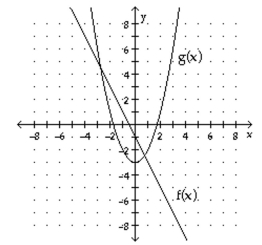
A) 0
B) -2
C) 3
D) -1
Evaluate (fg)(-1).

A) 0
B) -2
C) 3
D) -1
B
2
Evaluate the expression using the values given in the table.
-
A) 10
B) -2
C) 6
D) -5
-
A) 10
B) -2
C) 6
D) -5
-5
3
For the given functions f and g, find the requested composite function value.
- Find
A) 6,087
B) 78
C) 162
D) 1,299
- Find
A) 6,087
B) 78
C) 162
D) 1,299
1,299
4
For the given functions f and g, find the requested composite function.
- Find
A)
B)
C)
D)
- Find
A)
B)
C)
D)

Unlock Deck
Unlock for access to all 518 flashcards in this deck.
Unlock Deck
k this deck
5
For the given functions f and g, find the requested composite function.
-
A)
B)
C)
D)
-
A)
B)
C)
D)

Unlock Deck
Unlock for access to all 518 flashcards in this deck.
Unlock Deck
k this deck
6
For the given functions f and g, find the requested composite function.
-
A) x
B) 2x + 10
C) x - 5
D) x + 20
-
A) x
B) 2x + 10
C) x - 5
D) x + 20

Unlock Deck
Unlock for access to all 518 flashcards in this deck.
Unlock Deck
k this deck
7
For the given functions f and g, find the requested composite function value.
-
A) 25
B) 360
C) 31
D) 625
-
A) 25
B) 360
C) 31
D) 625

Unlock Deck
Unlock for access to all 518 flashcards in this deck.
Unlock Deck
k this deck
8
For the given functions f and g, find the requested composite function value.
-
A) 4
B) 3
C) 9
D) 6
-
A) 4
B) 3
C) 9
D) 6

Unlock Deck
Unlock for access to all 518 flashcards in this deck.
Unlock Deck
k this deck
9
For the given functions f and g, find the requested composite function value.
-
A) 21
B) 8
C) 6
D) 11
-
A) 21
B) 8
C) 6
D) 11

Unlock Deck
Unlock for access to all 518 flashcards in this deck.
Unlock Deck
k this deck
10
For the given functions f and g, find the requested composite function value.
- Find .
A)
B)
C)
D)
- Find .
A)
B)
C)
D)

Unlock Deck
Unlock for access to all 518 flashcards in this deck.
Unlock Deck
k this deck
11
For the given functions f and g, find the requested composite function.
- Find
A)
B)
C)
D)
- Find
A)
B)
C)
D)

Unlock Deck
Unlock for access to all 518 flashcards in this deck.
Unlock Deck
k this deck
12
For the given functions f and g, find the requested composite function.
f(x) = -2x + 3, g(x) = 6x + 4; Find (g °f)(x).
A) -12x + 22
B) -12x + 11
C) -12x - 14
D) 12x + 22
f(x) = -2x + 3, g(x) = 6x + 4; Find (g °f)(x).
A) -12x + 22
B) -12x + 11
C) -12x - 14
D) 12x + 22

Unlock Deck
Unlock for access to all 518 flashcards in this deck.
Unlock Deck
k this deck
13
For the given functions f and g, find the requested composite function value.
- Find .
A) 16,262
B) 136,278
C) 232,892
D) 216,630
- Find .
A) 16,262
B) 136,278
C) 232,892
D) 216,630

Unlock Deck
Unlock for access to all 518 flashcards in this deck.
Unlock Deck
k this deck
14
For the given functions f and g, find the requested composite function.
- Find
A)
B)
C)
D)
- Find
A)
B)
C)
D)

Unlock Deck
Unlock for access to all 518 flashcards in this deck.
Unlock Deck
k this deck
15
Evaluate the expression using the values given in the table.
-
A) Undefined
B) 10
C) 7
D) 0
-
A) Undefined
B) 10
C) 7
D) 0

Unlock Deck
Unlock for access to all 518 flashcards in this deck.
Unlock Deck
k this deck
16
For the given functions f and g, find the requested composite function.
f(x) = 5x + 10, g(x) = 5x - 1; Find (f °g)(x).
A) 25x + 9
B) 25x + 15
C) 25x + 49
D) 25x + 5
f(x) = 5x + 10, g(x) = 5x - 1; Find (f °g)(x).
A) 25x + 9
B) 25x + 15
C) 25x + 49
D) 25x + 5

Unlock Deck
Unlock for access to all 518 flashcards in this deck.
Unlock Deck
k this deck
17
For the given functions f and g, find the requested composite function.
- Find
A)
B)
C)
D)
- Find
A)
B)
C)
D)

Unlock Deck
Unlock for access to all 518 flashcards in this deck.
Unlock Deck
k this deck
18
For the given functions f and g, find the requested composite function value.
- Find .
A)
B)
C)
D)
- Find .
A)
B)
C)
D)

Unlock Deck
Unlock for access to all 518 flashcards in this deck.
Unlock Deck
k this deck
19
For the given functions f and g, find the requested composite function value.
- Find
A) 34,900
B) 38,544
C) 3,644
D) 13,376
- Find
A) 34,900
B) 38,544
C) 3,644
D) 13,376

Unlock Deck
Unlock for access to all 518 flashcards in this deck.
Unlock Deck
k this deck
20
For the given functions f and g, find the requested composite function value.
- Find
A)
B) 13
C)
D) 25
- Find
A)
B) 13
C)
D) 25

Unlock Deck
Unlock for access to all 518 flashcards in this deck.
Unlock Deck
k this deck
21
Find functions f and g so that f
-
A)
B)
C)
D)
-
A)
B)
C)
D)

Unlock Deck
Unlock for access to all 518 flashcards in this deck.
Unlock Deck
k this deck
22
Decide whether the composite functions, f nd f, are equal to x.
-
A) Yes, no
B) No, no
C) Yes, yes
D) No, yes
-
A) Yes, no
B) No, no
C) Yes, yes
D) No, yes

Unlock Deck
Unlock for access to all 518 flashcards in this deck.
Unlock Deck
k this deck
23
Solve the problem.
-An oil well off the Gulf Coast is leaking, with the leak spreading oil over the surface of the gulf as a circle. At any time t, in minutes, after the beginning of the leak, the radius of the oil slick on the surface is r(t) = 3t ft. Find
The area A of the oil slick as a function of time.
A)
B)
C)
D)
-An oil well off the Gulf Coast is leaking, with the leak spreading oil over the surface of the gulf as a circle. At any time t, in minutes, after the beginning of the leak, the radius of the oil slick on the surface is r(t) = 3t ft. Find
The area A of the oil slick as a function of time.
A)
B)
C)
D)

Unlock Deck
Unlock for access to all 518 flashcards in this deck.
Unlock Deck
k this deck
24
Find functions f and g so that f
-
A)
B)
C)
D)
-
A)
B)
C)
D)

Unlock Deck
Unlock for access to all 518 flashcards in this deck.
Unlock Deck
k this deck
25
Decide whether the composite functions, f nd f, are equal to x.
-
A) No, yes
B) No, no
C) Yes, yes
D) Yes, no
-
A) No, yes
B) No, no
C) Yes, yes
D) Yes, no

Unlock Deck
Unlock for access to all 518 flashcards in this deck.
Unlock Deck
k this deck
26
Decide whether the composite functions, f nd f, are equal to x.
-
A) Yes, yes
B) No, yes
C) No, no
D) Yes, no
-
A) Yes, yes
B) No, yes
C) No, no
D) Yes, no

Unlock Deck
Unlock for access to all 518 flashcards in this deck.
Unlock Deck
k this deck
27
Decide whether the composite functions, f nd f, are equal to x.
-
A) Yes, yes
B) No, yes
C) Yes, no
D) No, no
-
A) Yes, yes
B) No, yes
C) Yes, no
D) No, no

Unlock Deck
Unlock for access to all 518 flashcards in this deck.
Unlock Deck
k this deck
28
Find functions f and g so that f
-
A)
B)
C)
D)
-
A)
B)
C)
D)

Unlock Deck
Unlock for access to all 518 flashcards in this deck.
Unlock Deck
k this deck
29
For the given functions f and g, find the requested composite function.
- Find
A)
B)
C)
D)
- Find
A)
B)
C)
D)

Unlock Deck
Unlock for access to all 518 flashcards in this deck.
Unlock Deck
k this deck
30
Find functions f and g so that f
-
A)
B)
C)
D)
-
A)
B)
C)
D)

Unlock Deck
Unlock for access to all 518 flashcards in this deck.
Unlock Deck
k this deck
31
Find functions f and g so that f
-
A)
B)
C)
D)
-
A)
B)
C)
D)

Unlock Deck
Unlock for access to all 518 flashcards in this deck.
Unlock Deck
k this deck
32
Find functions f and g so that f
-
A)
B)
C)
D)
-
A)
B)
C)
D)

Unlock Deck
Unlock for access to all 518 flashcards in this deck.
Unlock Deck
k this deck
33
Solve the problem.
-The population P of a predator mammal depends upon the number x of a smaller animal that is its primary food source. The population s of the smaller animal depends upon the amount a of a certain plant that is its
Primary food source. If and s(a) = 2a + 5, what is the relationship between the predator mammal
And the plant food source?
A)
B)
C)
D)
-The population P of a predator mammal depends upon the number x of a smaller animal that is its primary food source. The population s of the smaller animal depends upon the amount a of a certain plant that is its
Primary food source. If and s(a) = 2a + 5, what is the relationship between the predator mammal
And the plant food source?
A)
B)
C)
D)

Unlock Deck
Unlock for access to all 518 flashcards in this deck.
Unlock Deck
k this deck
34
Decide whether the composite functions, f nd f, are equal to x.
-
A) Yes, yes
B) Yes, no
C) No, no
D) No, yes
-
A) Yes, yes
B) Yes, no
C) No, no
D) No, yes

Unlock Deck
Unlock for access to all 518 flashcards in this deck.
Unlock Deck
k this deck
35
Decide whether the composite functions, f nd f, are equal to x.
-
A) No, no
B) Yes, yes
C) Yes, no
D) No, yes
-
A) No, no
B) Yes, yes
C) Yes, no
D) No, yes

Unlock Deck
Unlock for access to all 518 flashcards in this deck.
Unlock Deck
k this deck
36
Find functions f and g so that f
-
A)
B)
C)
D)
-
A)
B)
C)
D)

Unlock Deck
Unlock for access to all 518 flashcards in this deck.
Unlock Deck
k this deck
37
Decide whether the composite functions, f nd f, are equal to x.
-
A) No, no
B) No, yes
C) Yes, no
D) Yes, yes
-
A) No, no
B) No, yes
C) Yes, no
D) Yes, yes

Unlock Deck
Unlock for access to all 518 flashcards in this deck.
Unlock Deck
k this deck
38
Find functions f and g so that f
-
A)
B) ;
C)
D)
-
A)
B) ;
C)
D)

Unlock Deck
Unlock for access to all 518 flashcards in this deck.
Unlock Deck
k this deck
39
Decide whether the composite functions, f nd f, are equal to x.
-
A) No, yes
B) No, no
C) Yes, yes
D) Yes, no
-
A) No, yes
B) No, no
C) Yes, yes
D) Yes, no

Unlock Deck
Unlock for access to all 518 flashcards in this deck.
Unlock Deck
k this deck
40
Find functions f and g so that f
-
A)
B) ;
C)
D)
-
A)
B) ;
C)
D)

Unlock Deck
Unlock for access to all 518 flashcards in this deck.
Unlock Deck
k this deck
41
Solve the problem.



Unlock Deck
Unlock for access to all 518 flashcards in this deck.
Unlock Deck
k this deck
42
Find the domain of the composite function f
-
A)
B)
C) is any real number
D)
-
A)
B)
C) is any real number
D)

Unlock Deck
Unlock for access to all 518 flashcards in this deck.
Unlock Deck
k this deck
43
Find the domain of the composite function f
-
A)
B) or
C)
D) is any real number
-
A)
B) or
C)
D) is any real number

Unlock Deck
Unlock for access to all 518 flashcards in this deck.
Unlock Deck
k this deck
44
Find the domain of the composite function f
-
A)
B)
C) is any real number
D)
-
A)
B)
C) is any real number
D)

Unlock Deck
Unlock for access to all 518 flashcards in this deck.
Unlock Deck
k this deck
45
Find the domain of the composite function f
-
A)
B)
C) is any real number
D)
-
A)
B)
C) is any real number
D)

Unlock Deck
Unlock for access to all 518 flashcards in this deck.
Unlock Deck
k this deck
46
Find the domain of the composite function f
-
A)
B) is any real number
C)
D)
-
A)
B) is any real number
C)
D)

Unlock Deck
Unlock for access to all 518 flashcards in this deck.
Unlock Deck
k this deck
47
Solve the problem.



Unlock Deck
Unlock for access to all 518 flashcards in this deck.
Unlock Deck
k this deck
48
Find the domain of the composite function f
-
A)
B)
C) is any real number
D)
-
A)
B)
C) is any real number
D)

Unlock Deck
Unlock for access to all 518 flashcards in this deck.
Unlock Deck
k this deck
49
Solve the problem.
-The surface area of a balloon is given by , where is the radius of the balloon. If the radius is increasing with time , as the balloon is being blown up, according to the formula , find the surface area as a function of the time
A)
B)
C)
D)
-The surface area of a balloon is given by , where is the radius of the balloon. If the radius is increasing with time , as the balloon is being blown up, according to the formula , find the surface area as a function of the time
A)
B)
C)
D)

Unlock Deck
Unlock for access to all 518 flashcards in this deck.
Unlock Deck
k this deck
50
Find the domain of the composite function f
-
A)
B)
C)
D) is any real number
-
A)
B)
C)
D) is any real number

Unlock Deck
Unlock for access to all 518 flashcards in this deck.
Unlock Deck
k this deck
51
Find the domain of the composite function f
-
A) is any real number
B)
C)
D) or
-
A) is any real number
B)
C)
D) or

Unlock Deck
Unlock for access to all 518 flashcards in this deck.
Unlock Deck
k this deck
52
Find the domain of the composite function f
-
A) is any real number
B)
C)
D)
-
A) is any real number
B)
C)
D)

Unlock Deck
Unlock for access to all 518 flashcards in this deck.
Unlock Deck
k this deck
53
Find the domain of the composite function f
-
A)
B)
C)
D) all real numbers
-
A)
B)
C)
D) all real numbers

Unlock Deck
Unlock for access to all 518 flashcards in this deck.
Unlock Deck
k this deck
54
Solve the problem.



Unlock Deck
Unlock for access to all 518 flashcards in this deck.
Unlock Deck
k this deck
55
Find the domain of the composite function f
-
A)
B) is any real number
C)
D)
-
A)
B) is any real number
C)
D)

Unlock Deck
Unlock for access to all 518 flashcards in this deck.
Unlock Deck
k this deck
56
Solve the problem.



Unlock Deck
Unlock for access to all 518 flashcards in this deck.
Unlock Deck
k this deck
57
Indicate whether the function is one-to-one.
{(12, -18), (-12, -18), (20, -8)}
A) Yes
B) No
{(12, -18), (-12, -18), (20, -8)}
A) Yes
B) No

Unlock Deck
Unlock for access to all 518 flashcards in this deck.
Unlock Deck
k this deck
58
Solve the problem.



Unlock Deck
Unlock for access to all 518 flashcards in this deck.
Unlock Deck
k this deck
59
Solve the problem.
-An airline charter service charges a fare per person of $350 plus $20 for each unsold seat. The airplane holds 125 passengers. Let x represent the number of unsold seats and write an expression for the total revenue R for a
Charter flight.
A) or
B) or
C) or
D) or
-An airline charter service charges a fare per person of $350 plus $20 for each unsold seat. The airplane holds 125 passengers. Let x represent the number of unsold seats and write an expression for the total revenue R for a
Charter flight.
A) or
B) or
C) or
D) or

Unlock Deck
Unlock for access to all 518 flashcards in this deck.
Unlock Deck
k this deck
60
Indicate whether the function is one-to-one.
{(3, -12), (7, 4), (12, -8)}
A) Yes
B) No
{(3, -12), (7, 4), (12, -8)}
A) Yes
B) No

Unlock Deck
Unlock for access to all 518 flashcards in this deck.
Unlock Deck
k this deck
61
The graph of a one-to-one function f is given. Draw the graph of the inverse function f-1 as a dashed line or curve.
-
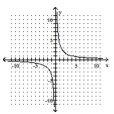
A) Function is its own inverse
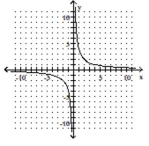
B)
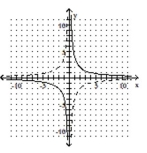
-

A) Function is its own inverse

B)


Unlock Deck
Unlock for access to all 518 flashcards in this deck.
Unlock Deck
k this deck
62
Use the horizontal line test to determine whether the function is one-to-one.
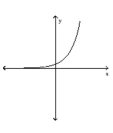
A) No
B) Yes

A) No
B) Yes

Unlock Deck
Unlock for access to all 518 flashcards in this deck.
Unlock Deck
k this deck
63
Use the horizontal line test to determine whether the function is one-to-one.
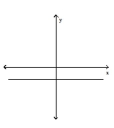
A) No
B) Yes

A) No
B) Yes

Unlock Deck
Unlock for access to all 518 flashcards in this deck.
Unlock Deck
k this deck
64
Find the inverse of the function and state its domain and range .
-
A)
B)
C)
D)
-
A)
B)
C)
D)

Unlock Deck
Unlock for access to all 518 flashcards in this deck.
Unlock Deck
k this deck
65
Use the horizontal line test to determine whether the function is one-to-one.
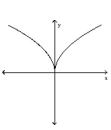
A) No
B) Yes

A) No
B) Yes

Unlock Deck
Unlock for access to all 518 flashcards in this deck.
Unlock Deck
k this deck
66
Use the horizontal line test to determine whether the function is one-to-one.
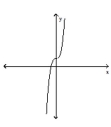
A) Yes
B) No

A) Yes
B) No

Unlock Deck
Unlock for access to all 518 flashcards in this deck.
Unlock Deck
k this deck
67
The graph of a one-to-one function f is given. Draw the graph of the inverse function f-1 as a dashed line or curve.
-
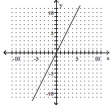
A)
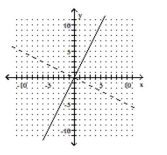
B)
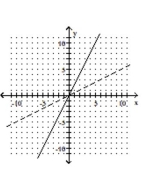
-

A)

B)


Unlock Deck
Unlock for access to all 518 flashcards in this deck.
Unlock Deck
k this deck
68
Find the inverse. Determine whether the inverse represents a function.
-
A) not a function
B) ; not a function
C) a function
D) ; a function
-
A) not a function
B) ; not a function
C) a function
D) ; a function

Unlock Deck
Unlock for access to all 518 flashcards in this deck.
Unlock Deck
k this deck
69
The graph of a one-to-one function f is given. Draw the graph of the inverse function f-1 as a dashed line or curve.
-
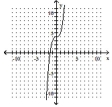
A)
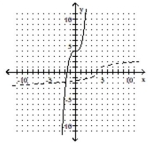
B)

-

A)

B)


Unlock Deck
Unlock for access to all 518 flashcards in this deck.
Unlock Deck
k this deck
70
Find the inverse of the function and state its domain and range .
-
A)
B)
C)
D)
-
A)
B)
C)
D)

Unlock Deck
Unlock for access to all 518 flashcards in this deck.
Unlock Deck
k this deck
71
Decide whether or not the functions are inverses of each other.
-
A) Yes
B) No
-
A) Yes
B) No

Unlock Deck
Unlock for access to all 518 flashcards in this deck.
Unlock Deck
k this deck
72
Use the graph of the given one-to-one function to sketch the graph of the inverse function. For convenience, the graph of
y = x is also given.
-
A)
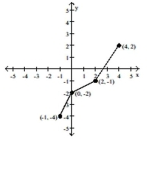
B)
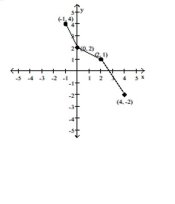
C)
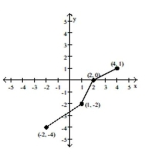
D)
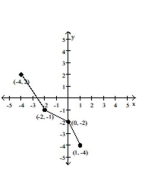
y = x is also given.
-

A)

B)

C)

D)


Unlock Deck
Unlock for access to all 518 flashcards in this deck.
Unlock Deck
k this deck
73
The graph of a one-to-one function f is given. Draw the graph of the inverse function f-1 as a dashed line or curve.
-
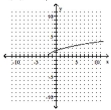
A)
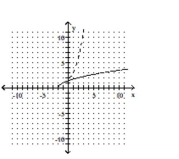
B)
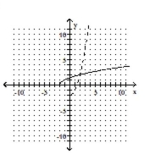
-

A)

B)


Unlock Deck
Unlock for access to all 518 flashcards in this deck.
Unlock Deck
k this deck
74
Indicate whether the function is one-to-one.
{(6, -6), (12, -5), (10, -4), (8, -3)}
A) No
B) Yes
{(6, -6), (12, -5), (10, -4), (8, -3)}
A) No
B) Yes

Unlock Deck
Unlock for access to all 518 flashcards in this deck.
Unlock Deck
k this deck
75
Indicate whether the function is one-to-one.
{(5, 4), (6, 4), (7, 3), (8, -9)}
A) Yes
B) No
{(5, 4), (6, 4), (7, 3), (8, -9)}
A) Yes
B) No

Unlock Deck
Unlock for access to all 518 flashcards in this deck.
Unlock Deck
k this deck
76
Use the horizontal line test to determine whether the function is one-to-one.
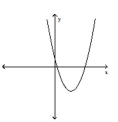
A) No
B) Yes

A) No
B) Yes

Unlock Deck
Unlock for access to all 518 flashcards in this deck.
Unlock Deck
k this deck
77
Use the horizontal line test to determine whether the function is one-to-one.
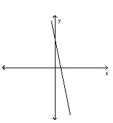
A) No
B) Yes

A) No
B) Yes

Unlock Deck
Unlock for access to all 518 flashcards in this deck.
Unlock Deck
k this deck
78
Decide whether or not the functions are inverses of each other.
-
A) No
B) Yes
-
A) No
B) Yes

Unlock Deck
Unlock for access to all 518 flashcards in this deck.
Unlock Deck
k this deck
79
Indicate whether the function is one-to-one.
{(7, -3), (3, -7), (-2, 9), (2, -9)}
A) No
B) Yes
{(7, -3), (3, -7), (-2, 9), (2, -9)}
A) No
B) Yes

Unlock Deck
Unlock for access to all 518 flashcards in this deck.
Unlock Deck
k this deck
80
Find the inverse of the function and state its domain and range .
-
A)
B)
C)
D)
-
A)
B)
C)
D)

Unlock Deck
Unlock for access to all 518 flashcards in this deck.
Unlock Deck
k this deck



